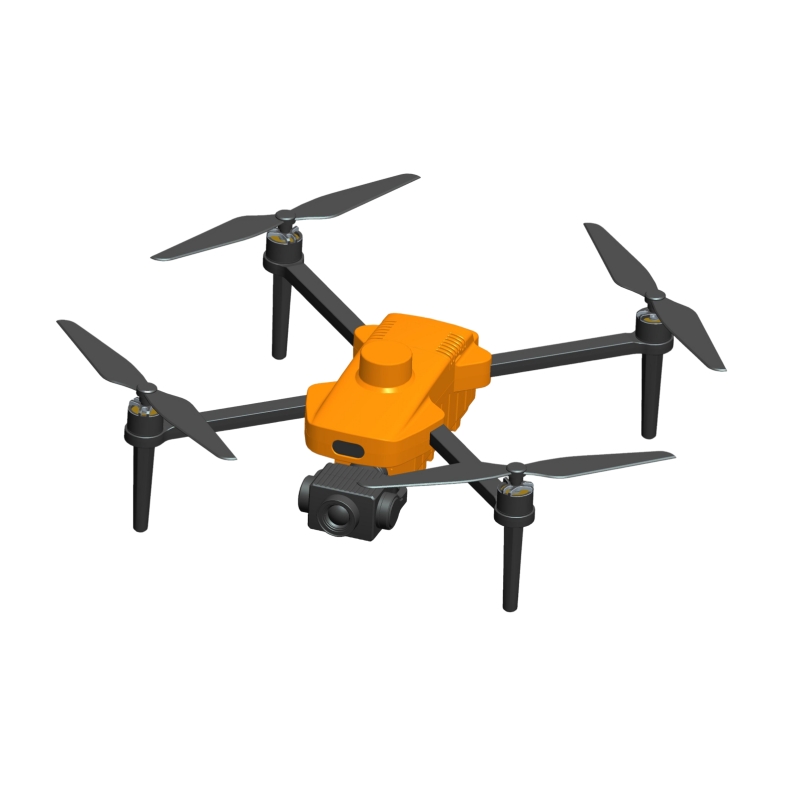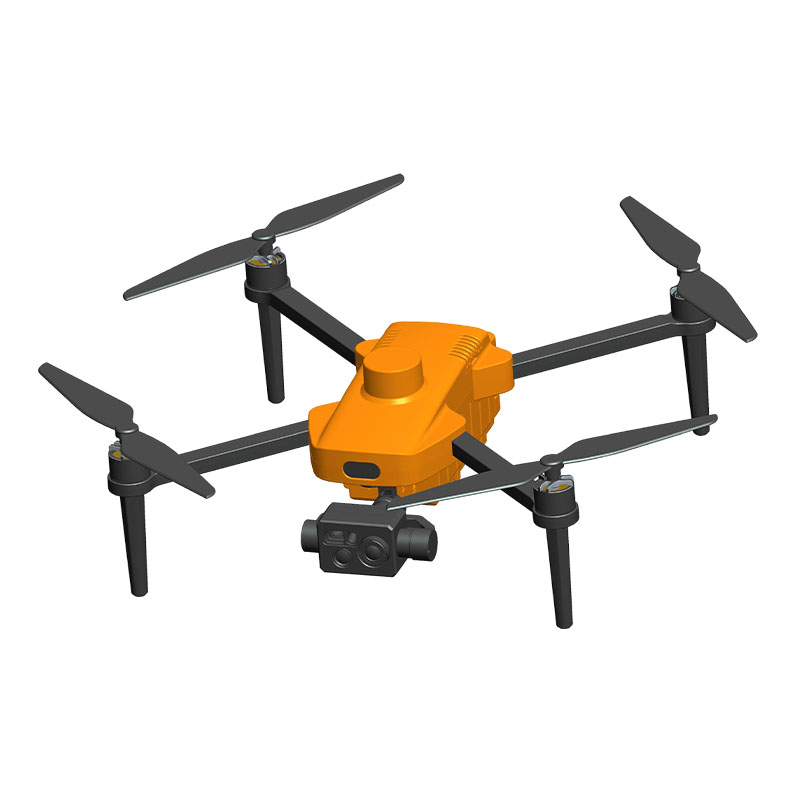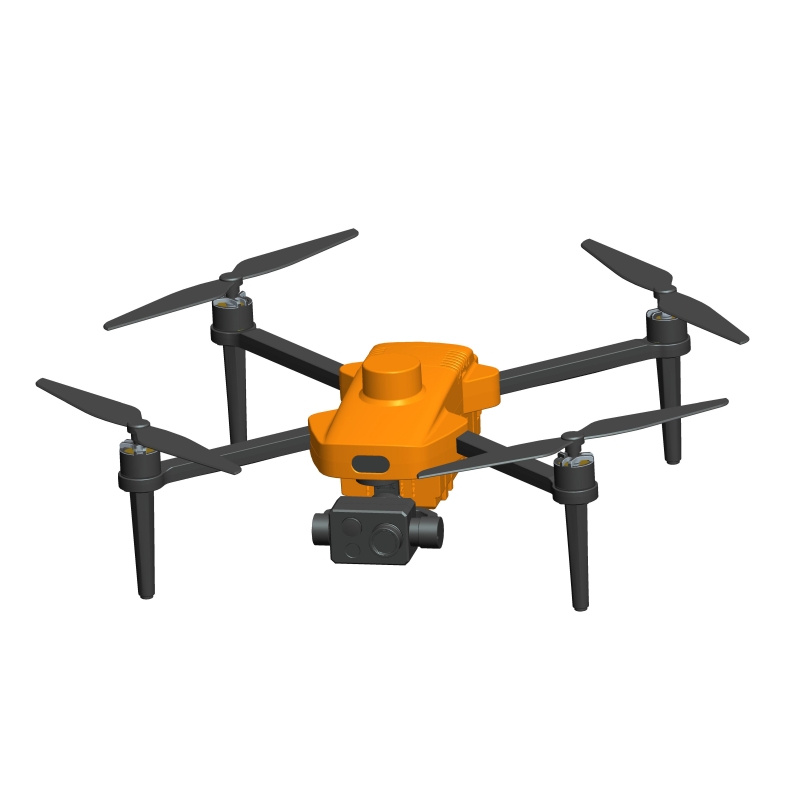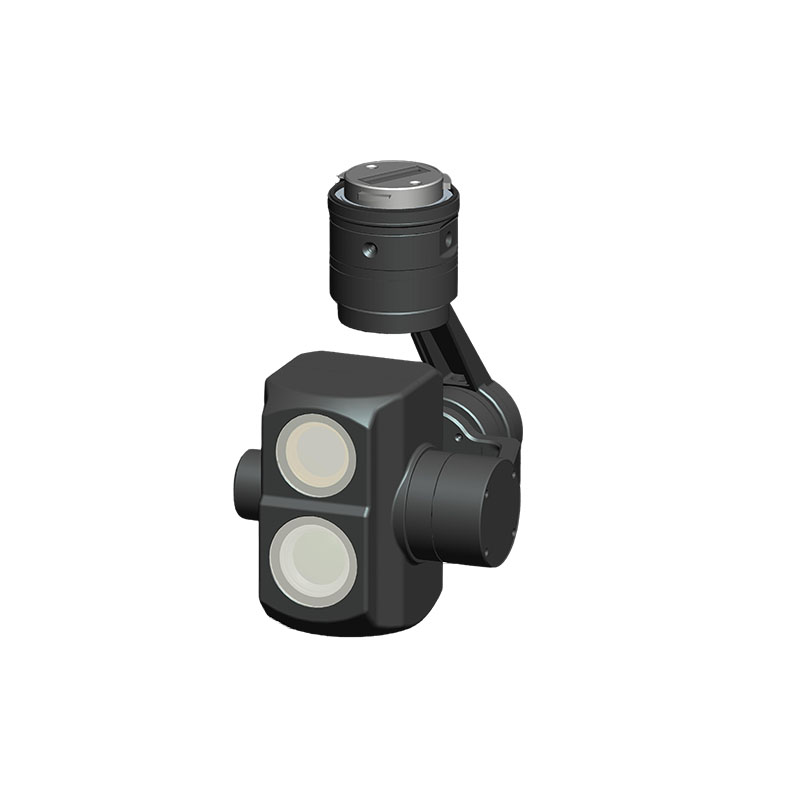Does the light color switching of the three-color reconnaissance quadcopter drone help in night reconnaissance target identification?
Release Time : 2025-07-22
The light color switching of the three-color light reconnaissance quadcopter uav can provide a multi-dimensional target identification basis for night reconnaissance. The night environment light is complex, and different colors of light have different effects on objects. For example, red light has strong penetration into vegetation, green light has less scattering in a humid environment, and white light can restore the true color of the object. By switching different colors, reconnaissance personnel can choose the most suitable light according to the target's environment, so that the target and the background form a more obvious contrast, making it easier to identify the target outline.
When identifying targets of different materials, the role of three-color light reconnaissance quadcopter uav light color switching is particularly prominent. Metal materials will show strong reflections under white light, while the reflection is weakened under red light, making it easier to observe their texture; cloth targets have more obvious color differences under green light, and can distinguish fabrics of different colors. In night reconnaissance, the target may be composed of multiple materials. Switching the light color can make the characteristics of each material more clearly presented, avoid the omission of features caused by a single light color, and improve the accuracy of target recognition.
Three-color light reconnaissance Quadcopter UAV light color switching can adapt to different light intensities at night and optimize target recognition. There is almost no natural light in the late night environment, and white light can provide sufficient illumination to make the target details clear at a glance; in the case of moonlight or ambient light, using red or green light can reduce the interference caused by light reflection and prevent strong light from covering the subtle features of the target. For example, during night reconnaissance in the city, there are interferences such as street lights and building lights in the environment. Switching to low-brightness red light can reduce the impact of background light and allow the reconnaissance camera to focus more on the target itself.
For targets hidden in the shadow, color switching can enhance their distinction from the shadow. Objects at night are prone to form heavy shadows, and a single color of light may not be able to penetrate the shadow, causing the target to merge with the shadow. Switching to a light color with strong penetration, such as green, can partially illuminate the shadow area and make the outline of the target hidden in it appear; if the target itself is darker in color, using white light can increase its brightness and make it stand out from the shadow, making it easier for reconnaissance personnel to judge the shape and position of the target.
Three-color light reconnaissance Quadcopter UAV light color switching helps to distinguish the dynamic and static states of the target. In night reconnaissance, dynamic targets (such as moving people and vehicles) and static targets (such as buildings and vegetation) require different recognition strategies. Red light can capture the moving trajectory of dynamic objects more keenly, because the human eye is more sensitive to red motion perception; white light can clearly present the details of static targets and facilitate the recording of their characteristics. Through color switching, the recognition focus can be adjusted for targets in different states to improve reconnaissance efficiency.
In scenes where multiple targets appear at the same time, color switching can help establish target classification standards. Night reconnaissance may find multiple targets at the same time. By fixing a certain color of light to illuminate a specific type of target, the target attributes can be quickly distinguished. For example, using green light to mark suspicious persons and red light to mark vehicles, the scouts can quickly classify targets in complex scenes through the color difference of the pictures sent back by the camera to avoid confusion. Especially in team collaborative reconnaissance, this color marking can unify the recognition standards and improve the overall target processing efficiency.
Three-color light reconnaissance Quadcopter UAV light color switching can also reduce visual fatigue during night reconnaissance and indirectly improve the continuity of target recognition. Long-term use of a single color of light can easily cause fatigue in the eyes of reconnaissance personnel, resulting in a decrease in sensitivity to the target. Switching to different colors of light can allow the visual nerves to be moderately adjusted to maintain a keen perception of target features. During long night reconnaissance missions, this adjustment can allow reconnaissance personnel to always maintain a good recognition state, avoid misjudgment or missed judgment due to fatigue, and ensure continuous and effective monitoring of the target.







